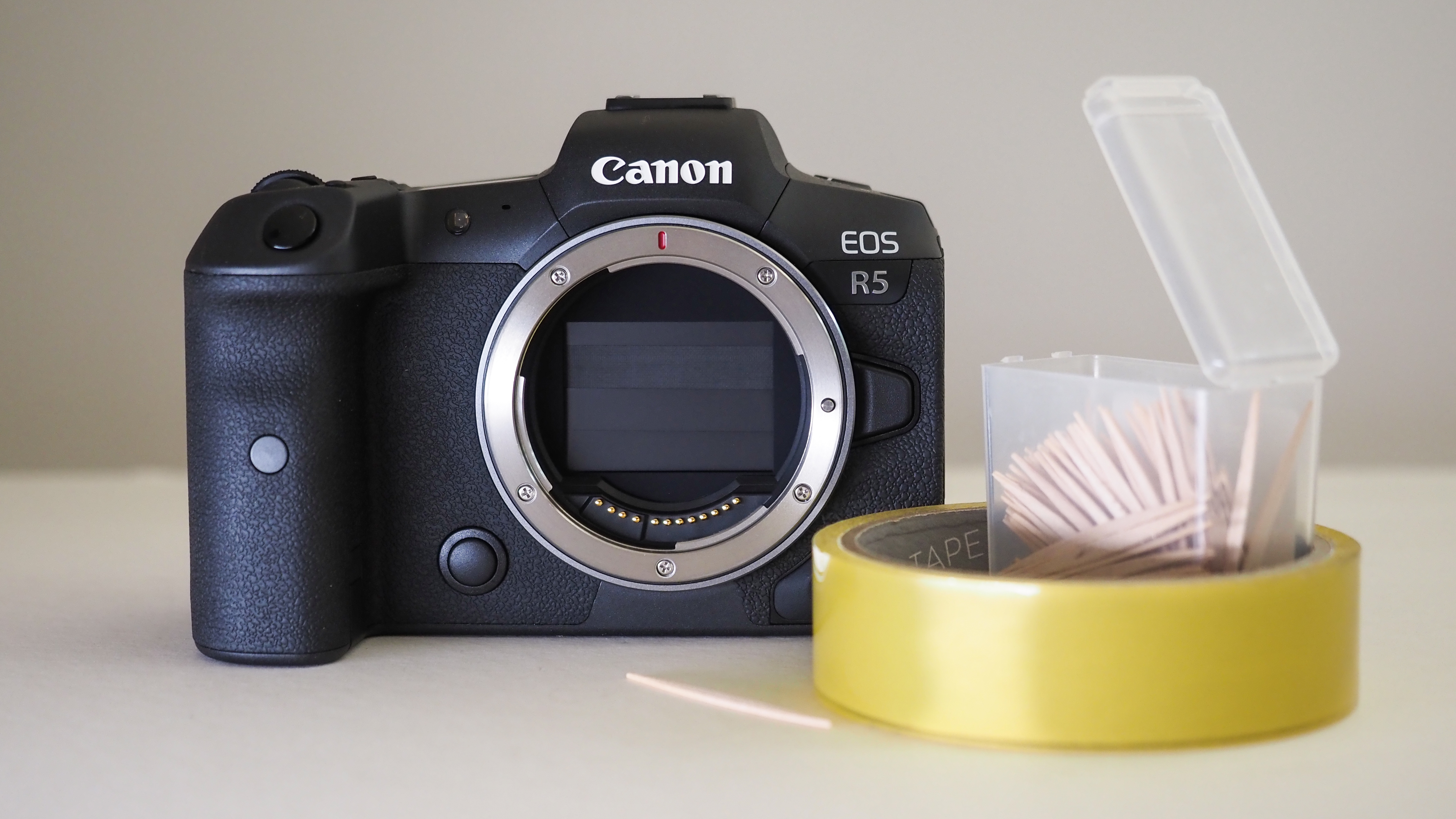
An ingenious solution has been found to overcome the Canon EOS R5's overheating limitations. And unlike other workarounds, you don't need a dummy battery or to record externally – all you need is a toothpick and some sticky tape!
As the world is well aware, the Canon EOS R5 is arguably the best Canon camera ever made for stills photography, but the limits imposed on video recording make it a contentious device for videography.
It was recently reported that the R5's recording limits, designed to protect the camera from overheating, are artificially imposed by software rather than being dictated by actual temperatures. This is all controlled by an algorithm, which appears to work by storing its history in non-volatile RAM (NVRAM).
This new hack does overcomes the algorithm, by denying the R5's ability to store this history in NVRAM – and it does so by tricking the camera into thinking its battery door is closed, but keeping it open in order to power-cycle and reset the 'trip switches' that activate the recording limits. This video by J. Marcus Photography shows how it's done:
"Just to give you an idea of the theory here – all of the camera's settings and state information is stored maintained in non-volatile memory, which for performance reasons is only updated when the camera performs an orderly shutdown (it's maintained in volatile regular RAM while the camera is powered on)," said the originator of the hack, DP Review forum member Horshack.
"By defeating the battery-sensor door mechanism we deny the camera the ability to do an orderly shutdown, which means it will discard most / all of the settings and state changes that occurred during that power-on session. The R5's thermal management algorithm must maintain the history of how it's managing the available recording time in NVRAM – by denying its ability to write those states out we might be able to inhibit its 'memory' of the previous session's throttling and so it would start with full availability again."
Of course, it's important to note that – as irritating and inconsistent as they may be – Canon put these recording limitations in place to protect the camera from the very real issue of overheating. Therefore this hack comes with a strong advisory NOT to use it as a long-term workaround, as it may damage your camera or memory cards.
Get the Digital Camera World Newsletter
The best camera deals, reviews, product advice, and unmissable photography news, direct to your inbox!
Still, it's another fascinating look into how the R5's video limits actually work – and gives us more insight into how they may potentially be overcome, hopefully via official solutions.
Read more:
Canon EOS R5 review
Canon EOS R6 review
Canon EOS R5 vs R6: what are the differences and which is best for you?
Digital Camera World is one of the leading authorities on camera and photography news, reviews, techniques, tutorials, comparisons, deals and industry analysis. The site doesn't just specialize in cameras, but all aspects of photography, videography and imaging – including camera phones, gimbals, lenses, lighting, editing software, filters, tripods, laptops, printers, photo books, desks, binoculars and more.
Whether you're using, looking to buy or trying to get the most out of a compact camera, action camera, camera drone, cinema camera, beginner camera or professional camera, Digital Camera World has a roster of experts with combined experience of over 100 years when it comes to cameras, photography and imaging.


